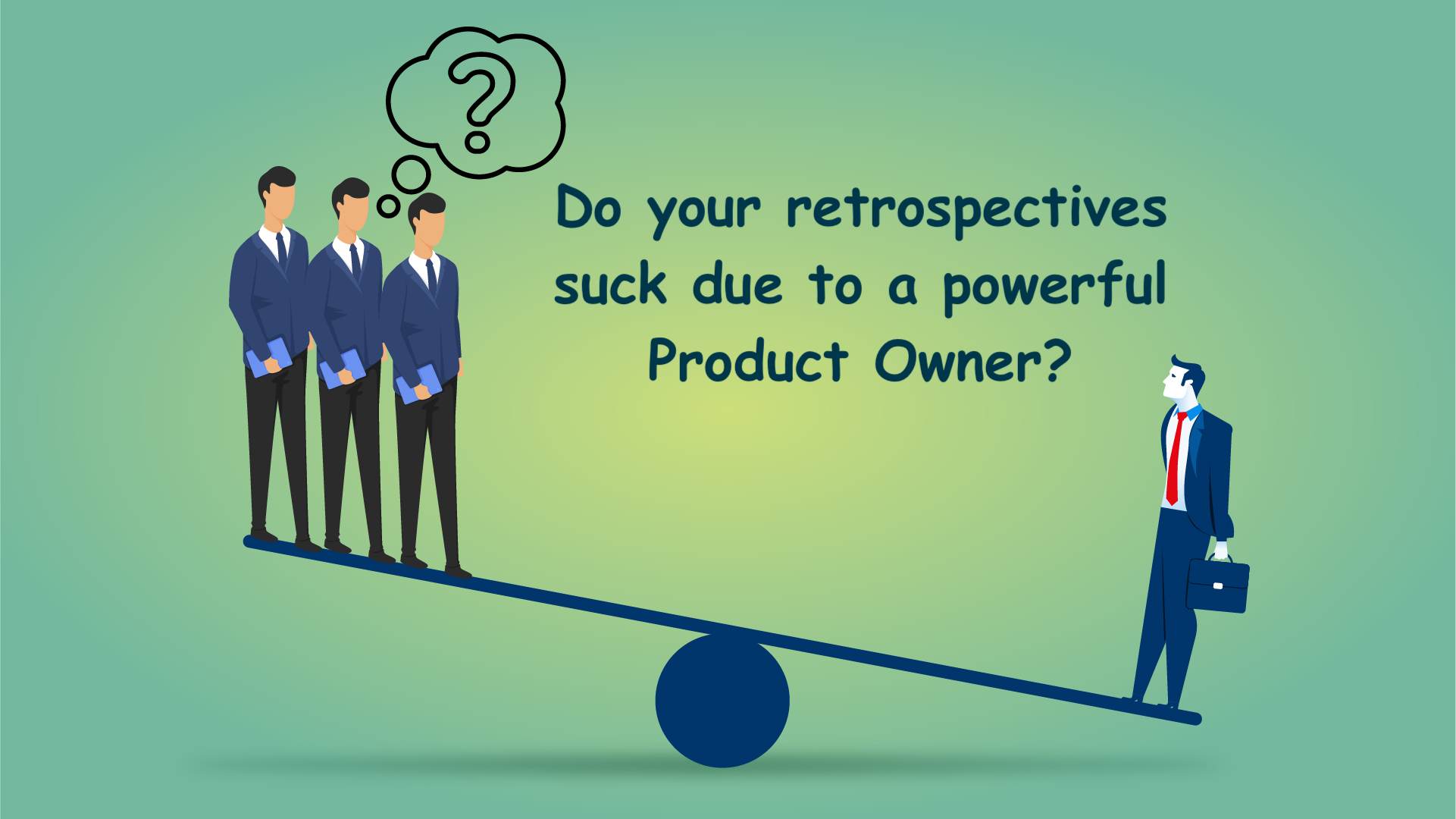
Do your retrospective suck due to a powerful Product Owner?
Powerful Product Owner. It sounds like a threat, isn’t it?
Anyone overpowering affects the whole team’s activity and outcome.
No wonder this affects retrospectives as well.
I did a poll on LinkedIn to know what a Scrum team should do to have better outcomes in a retrospective if the Product is a Powerful person.
The maximum number of people voted for “PO not to be a part of Retrospective or half of the retrospective.”
Let us take the reference of the Scrum Guide for Sprint Retrospective.
The primo here is that” In the Scrum Guide, it is evident that the whole Scrum team takes part in the Sprint Retrospective. But as known here, individuals’ thoughts or opinions vary when we add a context.
The context here is “Product Owner being dominant or influential or powerful may make the team feel unsafe. The team may fear being wrong or offending the Product Owner.
Now, this is the ground for Scrum Master to uphold their accountability,
- Establishing Scrum as defined in the Scrum Guide
- Helping for Scrum Team’s effectiveness
Let’s snoop into the actions a Scrum Master can take for the context in our hands. The activities, actions, or moves taken by a Scrum Master determine the significance of the outcome. Here are a few options for the Scrum Master that can be worked on in such conditions.
Building Transparency
In most organisations, the PO is considered the position of authority. And this way, the problems of developers not interacting much or opening up with the Product Owner begins. Ultimately this lack of Transparency or lack of communication starts affecting the outcome of the Scrum team.
The three pillars of the empirical method that are the foundation of Scrum are Transparency, Inspection, and Adaptation. Without Transparency in the Sprint Retrospective, the Inspection and adaptation may be flawed.
Scrum Masters’ can work with the Product Owner to get their buy-in for an intentional collaboration – Like; Product Owners’ committing to be a team person thoroughly to make the team comfortable with their approachable attitude and friendly behaviour. In my experience, Product Owners joining team bonding activities or any opportunity to mingle with the team have minimised the friction and enhanced Transparency. The team bonding activities that worked well for me were the Marsh Mellow challenge, Pot luck lunches etc.
Building Trust
According to human behaviour, the more you feel safe around someone, the better you open up or be transparent with them. And this comes from the level of Trust within the team.
So the root of it is to build trust within the group. Individuals getting to understand each other is the primary stage toward constructing Trust. Building trust creates openness within the team, resulting in group associates challenging each other constructively.
Sprint Retrospective is an incredible opportunity for Scrum Masters to actively facilitate to help team members get to know each other better or create vulnerability.
- Facilitate to create space: As a Scrum Master, ensure there are enough spaces for people with low or no authority to open up as well. The facilitation technique, 15% solutions from Liberating Structures, is an example of giving space for people.
- Facilitate to promote interaction: As a Scrum Master, create groups or pairs for people to interact in a small group to understand each other’s perspectives. Techniques like 1-2-4-All or Conversation Cafe help create group interactions.
Building Values
Scrum team should represent the Scrum Values for Scrum to be helpful in teams. The group’s behaviour defines its Values. Like when the team associates bring challenges to the table without hesitating to be judged, they show openness. Likewise, when a group associate sincerely questions a high ranked product owner, it portrays courageousness.
Team behaviour should be the primary focus of Scrum Master, and it is easier said than accomplished.
But using some techniques like Behaviour-based team working alliances and agreements, Value-based retrospectives help.
One such method is the Team Alliance from ORSC, where the group settles on the atmosphere they want to construct for themselves and the behaviour they desire to display to maintain the atmosphere.
Concluding Thoughts
Everyone has their own experience and perspectives; they are always different and exciting. I have shared mine and will love to hear yours now. But, in a nutshell, the Scrum Masters that work on building Transparency, Trust, and Values help create an environment for people to open up irrespective of the circumstances.





